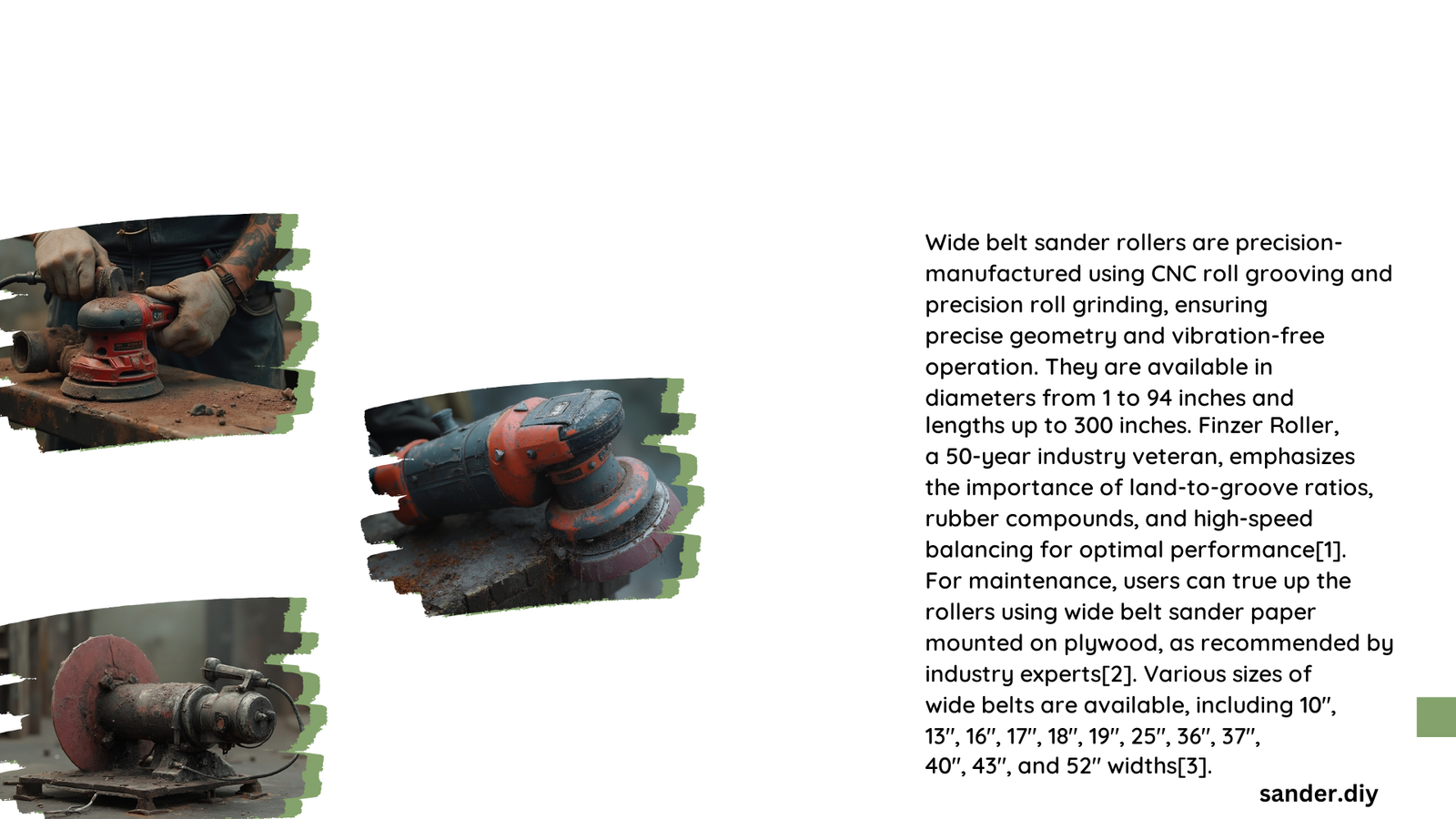Wide belt sander rollers are precision-engineered components critical for achieving smooth, consistent surface finishes in woodworking and manufacturing. These specialized rollers facilitate material transportation, pressure application, and belt tracking, serving as fundamental elements in high-performance wide belt sanding machines across various industrial applications.
What Are Wide Belt Sander Rollers?
Wide belt sander rollers represent sophisticated mechanical components designed to support, transport, and apply controlled pressure during the sanding process. These rollers play a pivotal role in determining the quality, consistency, and efficiency of surface finishing operations.
What Makes Roller Materials Critical?
Different roller materials significantly impact sanding performance:
| Material Type | Characteristics | Best Application |
|---|---|---|
| Rubber-Coated | High flexibility | Soft wood surfaces |
| Steel | Durability | Heavy-duty industrial use |
| Polyurethane | Wear resistance | Precision finishing |
How Do Roller Dimensions Impact Performance?
Roller dimensions directly influence sanding outcomes:
- Diameter Range: 4″ – 10″
- Length Variations: 24″ – 60″
- Surface Texture: Smooth, grooved, or segmented profiles
Key Specifications for Wide Belt Sander Rollers

What Are Essential Roller Configuration Parameters?
Critical parameters include:
- Diameter Specifications
- Infeed rollers: Typically larger (8-9 inches)
- Outfeed rollers: Smaller (4-6 inches)
-
Pressure rollers: Medium diameter with rubber coating
-
Material Composition
- Primary materials: Rubber, steel, polyurethane
- Hardness ratings: 60-90 Shore durometer
What Maintenance Strategies Maximize Roller Longevity?
Effective maintenance involves:
- Regular cleaning with specialized solutions
- Periodic lubrication of bearing systems
- Monitoring surface wear indicators
- Implementing preventative replacement schedules
Performance Optimization Techniques
How Can Professionals Enhance Roller Performance?
Recommended strategies include:
- Selecting appropriate roller hardness for specific materials
- Implementing precise alignment procedures
- Using high-quality replacement components
- Conducting routine precision calibrations
Cost Considerations for Wide Belt Sander Rollers
What Factors Influence Roller Pricing?
Price determinants include:
- Material quality
- Manufacturing precision
- Brand reputation
- Specialized design features
Estimated Price Range: $300 – $2,500 per roller set
Advanced Selection Criteria
What Should Professionals Consider When Choosing Rollers?
Key selection factors:
- Compatibility with existing machinery
- Material processing requirements
- Anticipated production volume
- Surface finish expectations
Technical Recommendations
- Always match roller specifications to machine requirements
- Prioritize quality over cost
- Maintain comprehensive maintenance logs
- Invest in professional calibration services
Conclusion
Wide belt sander rollers represent sophisticated engineering solutions critical for achieving superior surface finishing results. Professionals must approach roller selection, maintenance, and replacement with strategic precision.
Expert Tip
Consult manufacturer specifications and conduct periodic performance assessments to optimize roller functionality and extend equipment lifespan.
